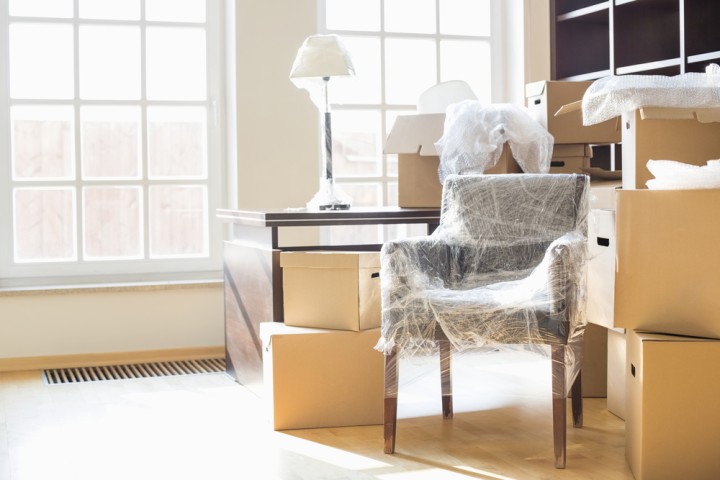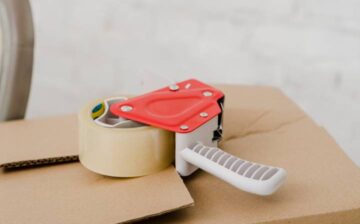
If you’re getting ready to move to a new home, in NYC for an example, you may be considering how to move your sofa, dining table, and other furniture. If you hire a moving company, the movers will pack and load the furniture in the moving truck.
But what if you’ve decided on a DIY move? You’re renting a truck and will move everything yourself, with the help of a few good friends or relatives. Maybe you’re moving directly to a new home or need to put everything in temporary storage before your new home is ready. While clothes, decorations, and small appliances are relatively easy to pack, large furniture items can be more challenging. Without proper packing, wooden dining tables can get scratched, legs can be dented or even broken, and upholstery can get torn. To ensure your furniture is well-protected, you can order furniture bags in bulk, which provide durable, cost-effective coverage for your larger items. Proper packing is as crucial for furniture as it is for your other household goods.
This post offers some suggestions for packing furniture for moving and storage.
Prepare Packing Supplies
Like other items, you’ll need the right packing supplies to pack furniture for moving or storage. You probably are already gathering bubble wrap and packing tape. Here are some other things you might need:
- Moving blankets
- Sofa and mattress covers to pack the pillows, cushions, and mattress separately
- Plastic stretch wrap
- Cardboard sheets
Prepare Moving Tools
Moving heavy furniture requires special moving tools. Moving straps, a skid board, and a hand truck or dolly are essential. Rent or purchase these before your move.
Placing gliders under heavy furniture makes moving it much more manageable and prevents scratching the floor. Towels and cardboard pieces are also useful.
Get the Right Moving Truck
If you are doing it on your own, moving furniture requires the right truck. Rent a truck with tie-downs and a ramp or elevator platform. The tie-downs will secure your furniture to the truck to prevent it from toppling over during transport. A ramp or elevator platform will make loading and unloading furniture much easier.
Clean the Furniture
Thoroughly dust and clean off your furniture. Dust and debris can scratch your furniture during moving. Also, you won’t bring any extra dust and dirt into your new home.
Take the Furniture Apart
Unless you’re moving a very short distance, you’ll want to take the time to disassemble your furniture (in comparison, movers do that, by default!)
- Remove the legs from tables and take out leaves
- Take bed frames apart
- Remove cushions and legs from sofas and oversized chairs
- Take drawers out of dressers and desks
Disassembling your furniture helps make it easier to pack and move, conserves space in the truck, and minimizes the possibility of damage. Get small, resealable plastic bags for each furniture item to hold screws, nuts, washers, and similar objects. Label each bag and attach it to the furniture piece with tape.
Put cardboard sheets over the corners of furniture to prevent damage to it and your home when you’re moving. Use shrink wrap to attach the sheets to the furniture items. If your furniture has protruding parts or wooden carvings, bubble wrap can help protect these. If drawers or panels can’t be removed, use stretch wrap to secure them and ensure they stay closed during the move.
Wrap table legs and bed frame parts you’ve taken apart in packing paper, then bubble wrap, and place them in packing boxes. You’ll need specialty containers with Styrofoam padding for delicate parts like glass tabletops.
For delicate furniture surfaces, put packing paper over these first, then apply bubble wrap over the paper as a second layer of protection.
Measure Door Frames and Hallways and Clear a Path
Even after dismantling, sofas and dressers may still have large, heavy parts to move. You’ll want to carefully measure doorways and halls to decide how to get them through. You may have to remove a door or even a door frame and wall moldings to enable the furniture to pass smoothly.
Before you move, clear a wide path to the front door. Make sure all doorways and halls are clear and prop doors open. This will make it easier to move furniture through the home without damage.
Load Heavy Furniture First
Put the heaviest furniture items in the truck first. Arrange the furniture evenly around the truck to distribute the weight and make the truck easier to handle. Secure heavy items to the walls and leave space for smaller items in the middle.
Consider Moving Insurance
If you get a moving company like, All Around Moving Services Company, Inc., they arrange insurance to be sufficient to cover your household items. For a DIY move, you won’t have this insurance. Check with your homeowner’s insurance policy and see whether it covers items in transit. If not, consider moving insurance to protect your belongings. Moving is unpredictable, and accidents can happen. Check what coverages are available and get the sufficient amount for your property.
Don’t Do Everything by Yourself
Although you’re making a “do it yourself” move, don’t take this literally. Moving heavy furniture isn’t a one-person job. Ask friends or relatives for help, or consider hiring day laborers on reputable websites for help moving heavy items, or simply call All Around Moving Company.
Storing Furniture
If you’re putting furniture in storage, first put plastic sheeting in the storage unit to prevent moisture from seeping up from the floor.
Next, cover your furniture with moving blankets or old sheets and blankets. For wooden furniture items, wrap these loosely with plastic wrap or bubble wrap. Wrapping too tightly can make them vulnerable to condensation. Otherwise, you can drape blankets or sheets or drop cloths over the furniture.
We hope you found this post, How to Wrap Furniture for Moving and Storage, useful. Be sure to check out our post, Tips to Pack and Protect Your Furniture When Moving Houses for more great information.
Have Experience in the Moving Industry? Want an Additional Income Stream? Work With All Around Moving!
All Around Moving’s Work With Us program, provides experienced moving consultants with the opportunity to run their own Relocation Consultant business from anywhere in the USA. We are already licensed, and provide you with a dedicated phone line, email address, moving software for leads management, invoicing, and complete set up.
We’ll even provide the carriers, or you can use your own. A nominal one-time start-up fee of $275.00, gives you the “key” to have your business up and running. There is $125.00 monthly recurring expense, and the cost of purchasing your own type of leads you want to work on. We share profits 50-50 with you from all jobs you book with us. Click here to learn more. We sent out a press release to the Associated Press announcing this opportunity for a relocation consultant position.





